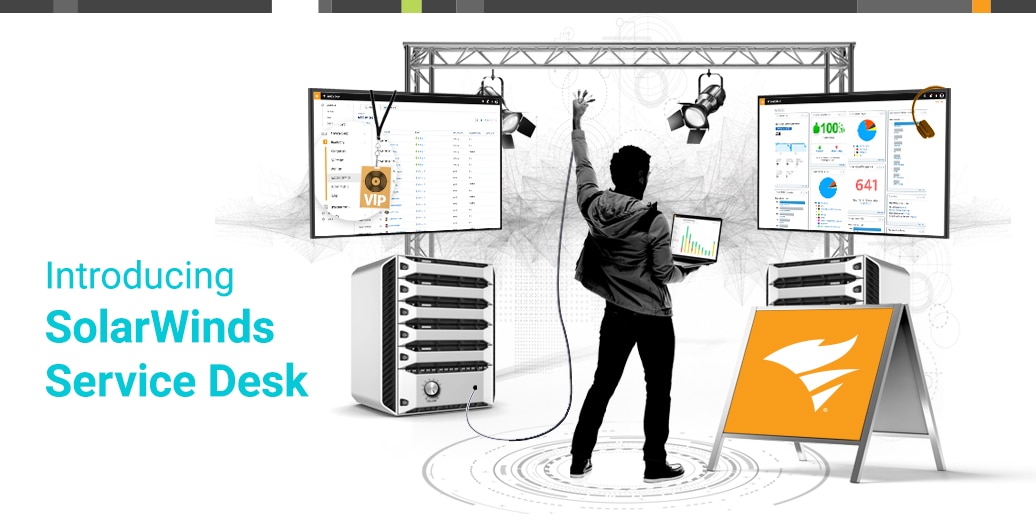Last week, my colleague wrote about all the ways you can
collect IT data to improve service delivery. It’s easy to see the relationships between IT, service delivery, and data collection. Service management technology is evolving to track this data and use it to create faster, smarter IT solutions for the organization.
But it begs the question, “If it works for IT, why not for the rest of the organization?”
The truth is, every department can use data to create practical solutions for its workforce.
Human resources is the department that most often deals directly with employees, and in fact, HR can collect data to create an experience like the service desk, removing the friction from daily requests, and connecting employees to the solutions they need.
Here are seven ways HR can use data to tailor an effective service delivery:
- Who sees what?
The further your employee service strategy expands, the more different service providers will have access to the same system. Some of the data that comes through will be inconsequential clutter for certain providers. They don’t need to see it. Even worse, some of the data will be sensitive, especially some of the requests for human resources. The rest of the team shouldn’t see that private data.
You can plan for a specific type of data collection by building roles and permissions on the back end. This allows you to make certain types of tickets, requests, and data “invisible” to the areas of the organization that don’t need to see it.
- Priority requests
Sometimes the human resources team needs to act quickly in an urgent situation. Injuries, health issues, and other personal emergencies arise, and these cases are high priority. Service desk automations can prioritize these tickets according to certain keywords.
It might also qualify as “critical” priority when certain team members submit requests through HR. If executives or hiring managers submit requests, an HR team can route and prioritize them automatically respective to the individual requester.
HR can collect data to create an experience like the service desk, removing the friction from daily requests, and connecting employees to the solutions they need.
- Knowledge base and self-service
It can be frustrating for employees when they’re not sure how to find some of the most basic HR resources. How do they change a beneficiary? How do they change their 401(k) contributions? Where do they find a digital copy of their W-2 form?
The answers to these questions might be straightforward, but the process for obtaining the answers can be cumbersome. Sure, you can submit a request, but you’ll have to wait in line.
A “smart” knowledge base can connect employees with these solutions articles, a very useful option for those inclined to seek self-service. We call it smart because it will actually use historical data to correlate certain solutions articles to certain search terms or requests. If the HR team keeps its knowledge base up to date, employees will easily find the appropriate articles to find easy answers to these questions.
Of course, some employees would rather just submit a request, in which case a modern service management tool should connect them to the appropriate service catalog item.
- Streamlined onboarding and offboarding
This is a big one because every HR department is responsible for these processes, but it’s difficult to keep them clean and efficient. The core of the problem in most onboarding processes consists of collecting data and then making that data work. When does the employee start? What is his/her job title and department? Is there a set of tools that come with this position? How much will he/she be paid? Which types of devices?
In order to properly execute an onboarding request, HR needs to collect answers to all of these questions, and then facilitate the execution of different tasks based on that data. It’s no wonder only 32% of companies get it right with a formal onboarding process.
The service catalog is the vehicle for this data collection and execution. Pre-populate a form to collect the answers to all of those questions, and build a workflow that automates tasks and approvals based on that data collection. With these custom forms, every onboarding or offboarding request will come with a tailored checklist that matches the needs of the individual hire/departure.

- Reporting on satisfaction and time to resolution
CSAT (customer satisfaction) and time to resolution are two key statistics in IT support. How satisfied are requesters? How long does it take, on average, to resolve their tickets/requests?
These statistics are equally critical (if not, more critical) in human resources. What’s more important to the People Department than connecting people to their needs in a timely, satisfactory manner? Most HR departments have no way to track either one.
With a service desk solution, you can run automated or on-demand reports on either statistic. Collect feedback automatically with a simple CSAT survey every x number of ticket resolutions, and see a complete view of how long those resolutions take in any window of time. This is valuable data in evaluating your processes and tweaking them to improve.
- Audit trails for legal compliance
With an official process and traceable workflow for every service delivery, your organization’s HR leaders can track any step of a process — even after a resolution. This visibility will prove beneficial in the case of a dissatisfied employee because HR leaders can diagnose any breakdowns after the fact. More importantly, your HR team can sleep peacefully knowing they have documentation of processes and communications under any question of legal compliance.
- Recruiting and winning the war for talent
When you bring all of these ideas together, you’re creating a positive employee experience — from the time they’re hired, through the onboarding process, and into their everyday work lives. Data is valuable in tracking candidates, interviewing, onboarding, developing, and servicing daily needs for employees. If you can use a service desk strategy to collect all of that data, and use it to enable employees to do their jobs well, your HR department will succeed in its greatest responsibility.
Data collection is an integral part of employee service for the human resources department. In order to provide individualized, personal support for every employee, it helps to know everything about the ways they work. There are far more ways to collect data through the service desk than just these seven, but this should give you some idea of the possibilities available to the HR leaders in your organization.









